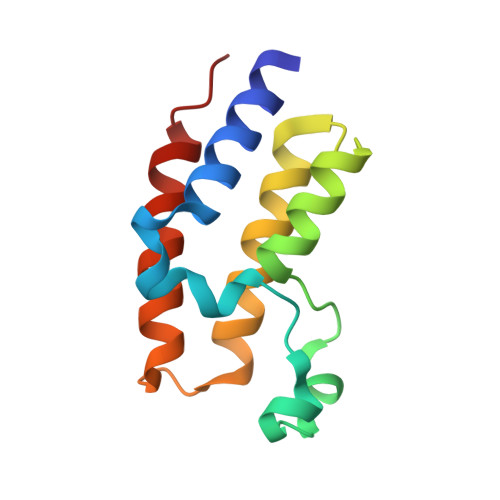Design, Synthesis, and Biological Activity of 1,2,3-Triazolobenzodiazepine BET Bromodomain Inhibitors.
Sharp, P.P., Garnier, J.M., Hatfaludi, T., Xu, Z., Segal, D., Jarman, K.E., Jousset, H., Garnham, A., Feutrill, J.T., Cuzzupe, A., Hall, P., Taylor, S., Walkley, C.R., Tyler, D., Dawson, M.A., Czabotar, P., Wilks, A.F., Glaser, S., Huang, D.C.S., Burns, C.J.(2017) ACS Med Chem Lett 8: 1298-1303
- PubMed: 29259751
- DOI: https://doi.org/10.1021/acsmedchemlett.7b00389
- Primary Citation of Related Structures:
5U6V - PubMed Abstract:
A number of diazepines are known to inhibit bromo- and extra-terminal domain (BET) proteins. Their BET inhibitory activity derives from the fusion of an acetyl-lysine mimetic heterocycle onto the diazepine framework. Herein we describe a straightforward, modular synthesis of novel 1,2,3-triazolobenzodiazepines and show that the 1,2,3-triazole acts as an effective acetyl-lysine mimetic heterocycle. Structure-based optimization of this series of compounds led to the development of potent BET bromodomain inhibitors with excellent activity against leukemic cells, concomitant with a reduction in c- MYC expression. These novel benzodiazepines therefore represent a promising class of therapeutic BET inhibitors.
Organizational Affiliation:
Walter and Eliza Hall Institute of Medical Research, 1G Royal Parade, Parkville, VIC 3052, Australia.
















